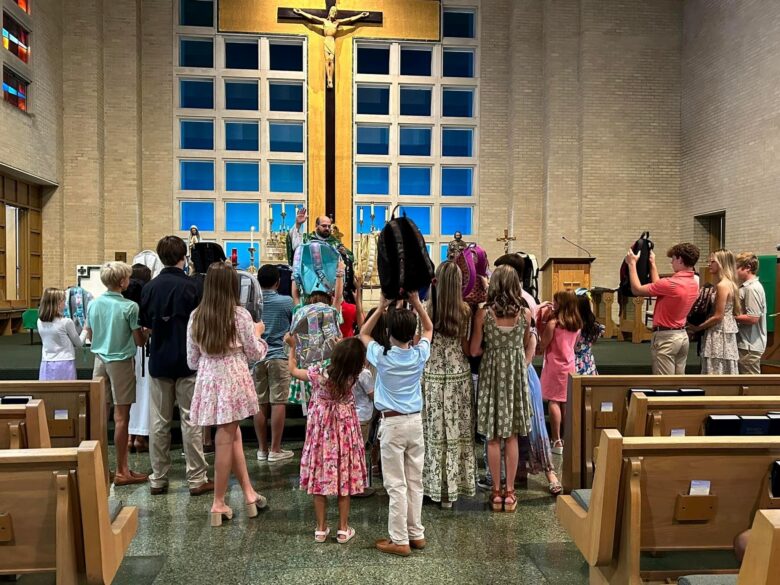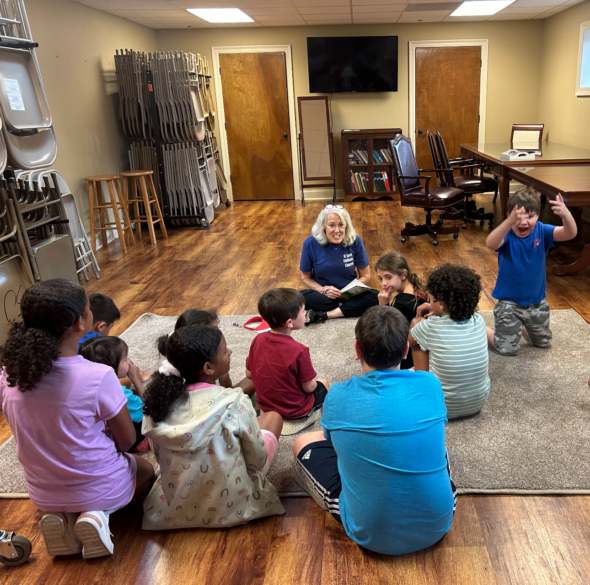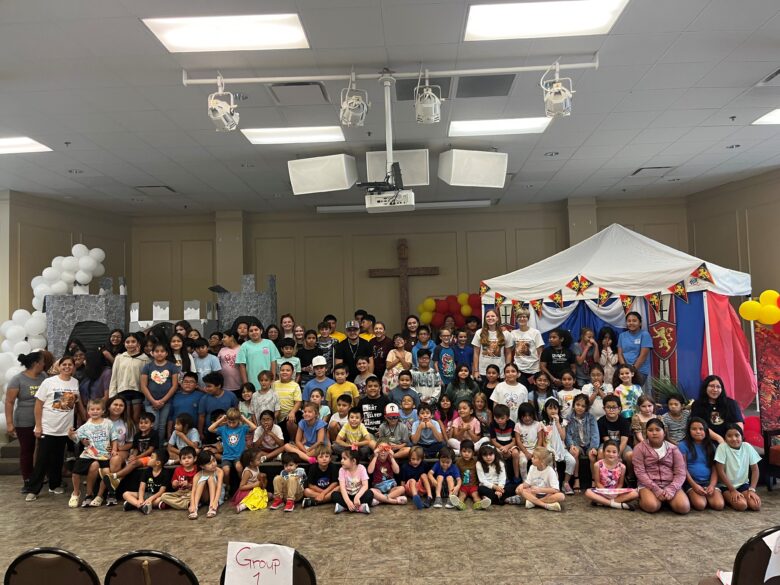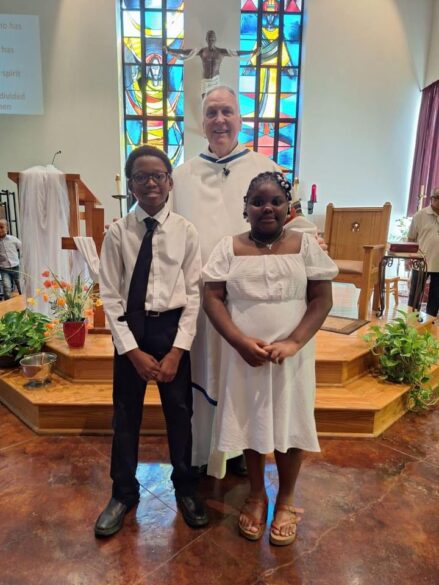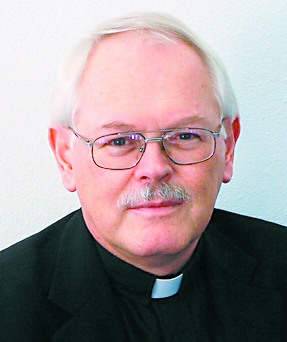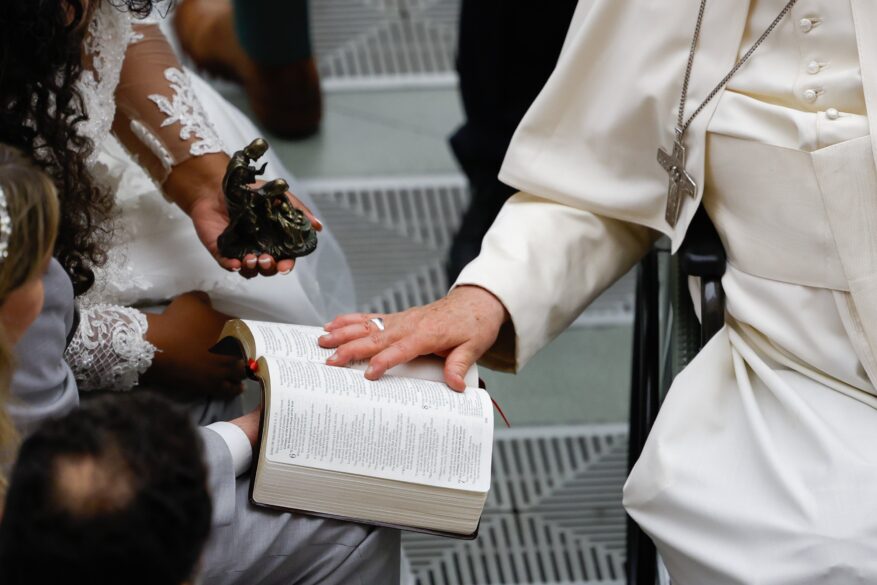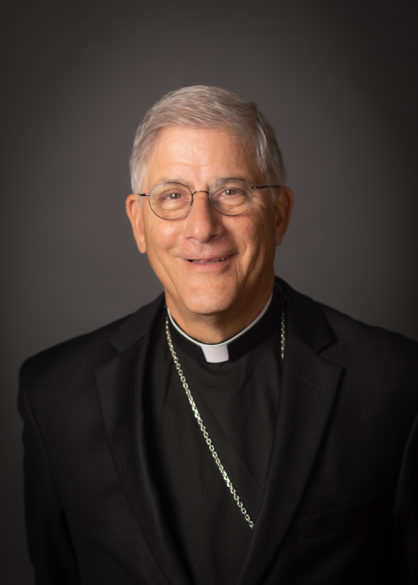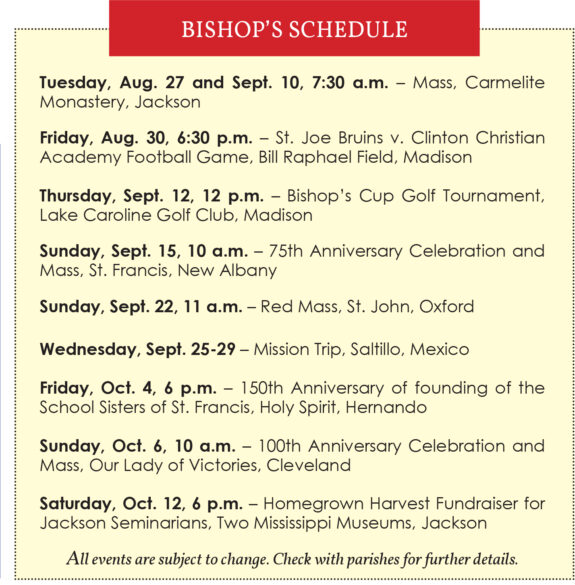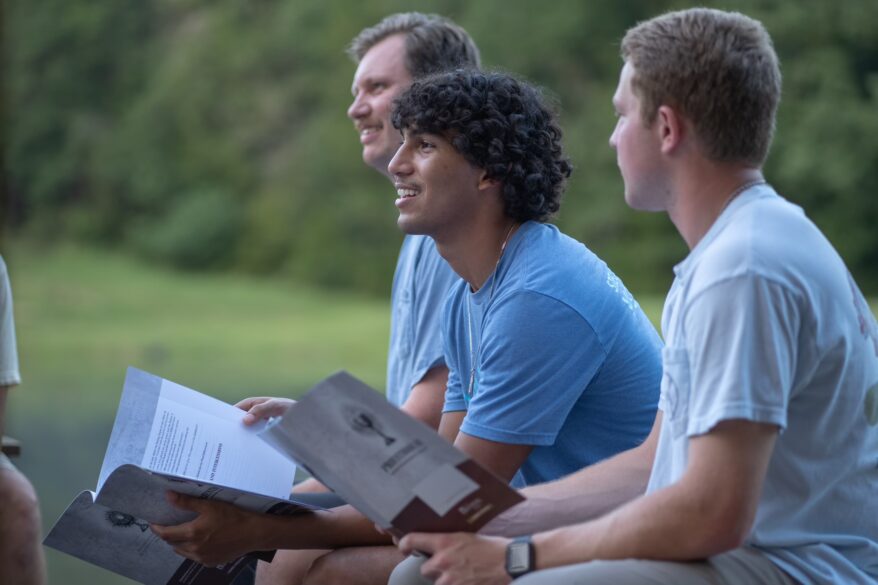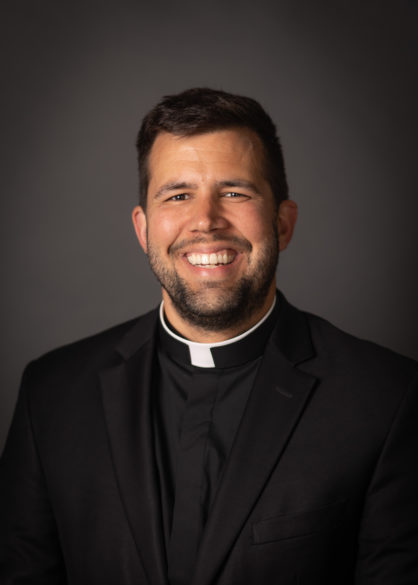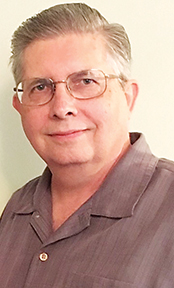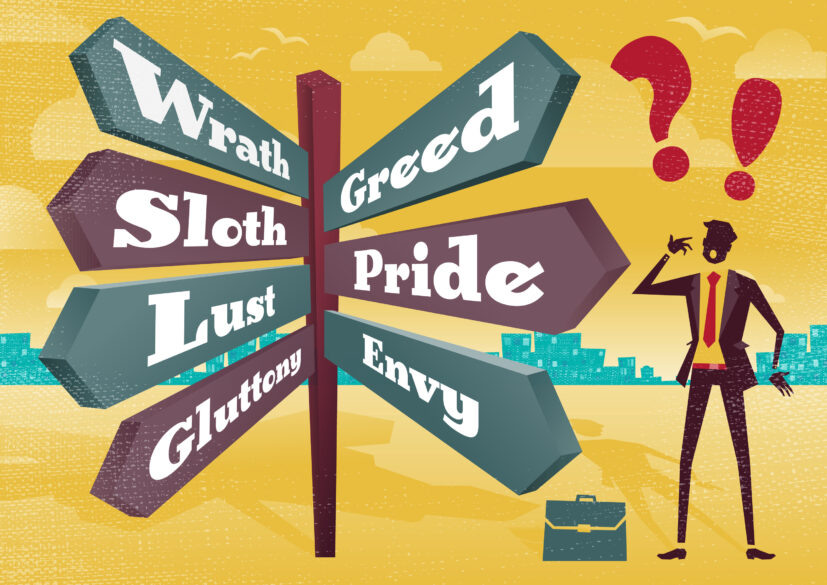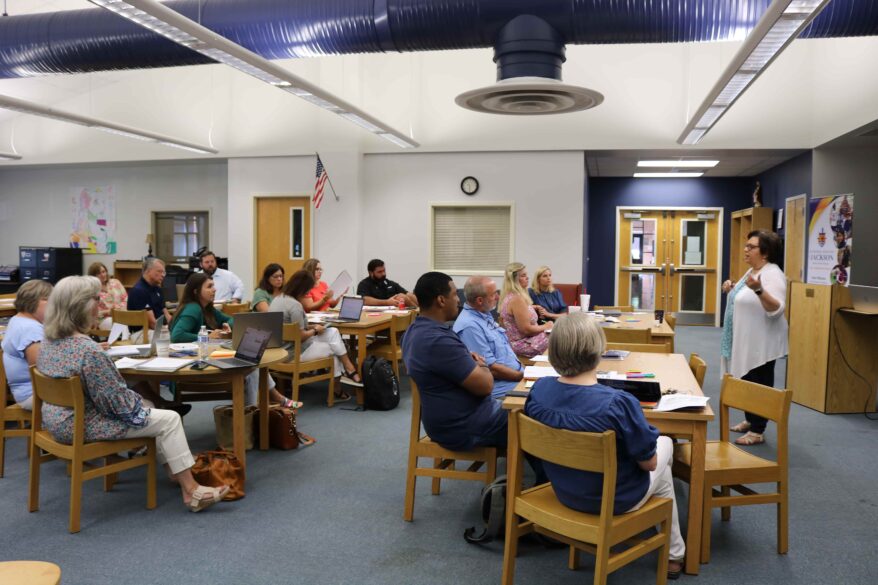By Peter Jesserer Smith
INDIANAPOLIS (OSV News) – As five days of the National Eucharistic Congress concluded with one final revival and a beautiful solemn Mass in Lucas Oil Stadium – Bishop Andrew H. Cozzens of Crookston, Minnesota, board chairman of the National Eucharistic Congress Inc., stood in Lucas Oil Stadium.
“I have a question for you,” he told the crowd. “This is the 10th National Eucharistic Congress – do you think we should do an 11th one?”
Some 60,000 congress participants – representing 50 U.S. states, 17 countries, and various Eastern and Western churches, and speaking over 40 languages – cheered wildly in the stadium.
They also again rose to their feet to give the U.S. Catholic bishops an enthusiastic standing ovation for making possible the five-day congress with its impact sessions, breakout sessions, special events, revival nights with Eucharistic adoration and Benediction and beautifully celebrated reverent Masses.
The event reflected the diversity of a church all united in the same Eucharistic Lord and eager to use their gifts for a new Pentecost in the church.

The first day of the July 17-21 congress began with an evening revival as the 30 perpetual pilgrims, who had walked the four National Eucharistic Pilgrimage routes, took their final official steps of their eight-week journey into the stadium carrying icons of each route’s respective patron saints – St. Juan Diego Cuauhtlatoatzin, St. Junipero Serra, St. Elizabeth Ann Seton and the Blessed Virgin Mary – that were put around the altar where the Blessed Sacrament was placed.
“How will we know that we are experiencing Eucharistic revival?” Cardinal Christophe Pierre, the papal nuncio to the U.S., asked in his keynote speech July 17, encouraging everyone to surrender their hearts to the Lord over the next few days. “When we are truly revived by the Eucharist,” he said, “then our encounter with Christ’s real presence in the sacrament opens us to an encounter with him in the rest of our life” and then “spills over in our daily life, a life of relating to others, our way of seeing others.”
Every day of the congress began with most congress-goers joining in beautifully and reverently celebrated Eucharistic liturgies in the stadium – including a July 20 Holy Qurbana, the Syro-Malabar form of the Eucharistic liturgy, prayed in English. Additional morning and evening Masses at nearby sites in different languages, such as Spanish or Vietnamese, or in different forms, such as the Byzantine rite or the older usage of the Roman rite.
Three days of the congress, July 18-20, were split between seven morning impact sessions and nearly 20 afternoon breakout sessions on a variety of topics meant to form, equip and inspire people, including clergy, to live more deeply their faith in light of Jesus making himself truly present in the Eucharist – and how to practically bring what they have learned into their parishes, ministries, groups and families.
The exhibit halls in the Indiana Convention Center were packed during the congress, as long lines formed for exhibits such as the Shroud of Turin or Eucharistic miracles. The convention center was also a place where the spontaneity of joy could be seen and felt. Young people marched through chanting their love for Jesus, while further on, a group of Catholic women, dressed in traditional apparel from Cameroon, sang and danced their love for Jesus and Mary to the delight of those gathered around them.
Congress-goers had the opportunity to attend off-site events such as The Catholic Project’s panel discussion July 19 that explored the challenges of navigating the dating landscape as Catholics.
Tens of thousands of congress-goers at the revivals – and the liturgies as well – eagerly joined their voices in singing the beautiful hymns and chants, both traditional and contemporary, in English, Spanish, Latin and other languages. The congress saw the musicianship of Dave and Lauren Moore, Sarah Kroger and Matt Maher, as well as the talents of the men’s ensemble Floriani and the Indianapolis Symphony Orchestra.
“The reverence was just awe-inspiring, and that’s something I would like to take back to our parish,” Deacon Robb Caputo of the Diocese of Peoria, Illinois, told OSV News.
The nightly revival sessions created a sensory experience of awe around the Eucharistic Lord, as tens of thousands prayed in silent contemplation before the Eucharist on the altar – illuminated in the dark stadium by spotlights. Adoring Jesus in the stadium, concluding with Benediction, was the pinnacle movement of each evening.
Keynote speakers and testimonies helped keep people’s eyes fixed on Jesus’ personal love for them and his desire to be close to them.
One such nightly revival, focused on healing, indicated the problem with Catholic belief in the Eucharist – was more about the heart than the head, and needed Catholics to repent of their indifference to Jesus.
“Knowledge can make us great, but only love can make a saint,” said Father Mike Schmitz, the Diocese of Duluth, Minnesota, priest known for chart-topping podcasts “The Bible in a Year” and “The Catechism in a Year.” Mother Olga of the Sacred Heart, who survived four wars in the Middle East, recounted how in the midst of her own personal suffering she heard Jesus say in her heart: “That even on the cross and through the cross, we can still choose to love.”
Jonathan Roumie, the actor famous for his portrayal of Jesus in the hit miniseries “The Chosen,” told the audience at the final revival night July 20 after reading Jesus’ Bread of Life discourse from John 6, “The Eucharist for me is healing. The Eucharist for me is peace, the Eucharist for me is my grounding. The Eucharist for me is his heart within me.”
Murielle and Dominic Blanchard of Gallup, New Mexico, navigated the congress with six children aged 8 and under, including 20-month twins, and a baby on the way. They said the Catechesis of the Good Shepherd atrium was key for them, because it provided both formation for their older children and had space for the twins to play.
Throughout the congress, the historic and stately St. John’s Catholic Church across from the Indiana Convention Center’s main entrance fulfilled its role as a spiritual hub. A steady flow of pilgrims came and went from the main church during 24-hour adoration throughout the congress. It had times for silence as well as times geared toward families, where children were invited to get close to the Eucharist, put a flower in a vase near the monstrance, and just adore as beautiful, simple melodies lifted up the packed church in prayer.
More than 1,200 religious sisters and brothers, 1,170 priests, 630 deacons, 610 seminarians and 200 bishops participated in the congress, according to congress organizers. At a press conference July 19, Philadelphia Archbishop Nelson J. Pérez said he had never seen anything like the congress, as a non-papal event, in his 35 years of priesthood.
“You can sense the energy of what’s happening here, which is touching hearts,” he said, adding the experience was making him think about how to respond to the need for the church’s sacraments to be more accessible.
The highlight came July 20 as tens of thousands of Catholics followed behind the truck-pulled, flower-rimmed float carrying the Blessed Sacrament accompanied by Bishop Cozzens and Indianapolis Archbishop Charles C. Thompson. They walked 10 blocks from the convention center through downtown Indianapolis to the Indiana War Memorial Plaza for what Bishop Cozzens said “might be the largest Eucharistic procession in the country in decades.”
Nancy Leuhrmann of Cincinnati told OSV News the experience, which culminated in Eucharistic adoration and Benediction at the plaza, was “really wonderful, seeing all the people just quiet, reverent and joyful.” Leuhrmann said the security presence didn’t have much to do and she noted the officers thanked the crowd for making their jobs easy.
At the sending-forth Mass July 21, Pope Francis’ special envoy to the congress, Cardinal Luis Antonio Tagle, delivered a homily with warmth, joy and humor that made participants both laugh and feel inspired as he told them, “A Eucharistic people is a missionary and evangelizing people.”
“We should not keep Jesus to ourselves,” he said, exhorting them not to use their time in church to escape others, but to “share Jesus’ tender love” with “the weary, the hungry and suffering … the lost, confused and weak.”
“Go and share Jesus’ gift of reconciliation and peace to those who are divided,” he said, emphasizing, “Let us proclaim Jesus joyfully and zealously for the life of the world!”
Bishop Cozzens revealed there would be another National Eucharistic Pilgrimage in 2025 from Indianapolis to Los Angeles, and possibly an earlier National Eucharistic Congress than 2033.
But he invited people to take this experience of the congress and – echoing Cardinal Tagle’s call for Eucharistic “missionary conversion” – join the congress’s “Walk with One” initiative.
“Commit yourself to walking with one person,” he said. “Commit yourself to becoming a Eucharistic missionary, someone who lives deeply a Eucharistic life, and having received that gift, allows themselves to be given as a gift.”
(Peter Jesserer Smith is national news editor for OSV News. Staff from OSV News, The Criterion and Simone Orendain contributed to this report.)

